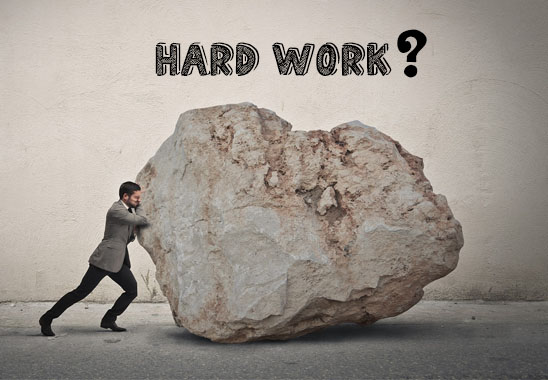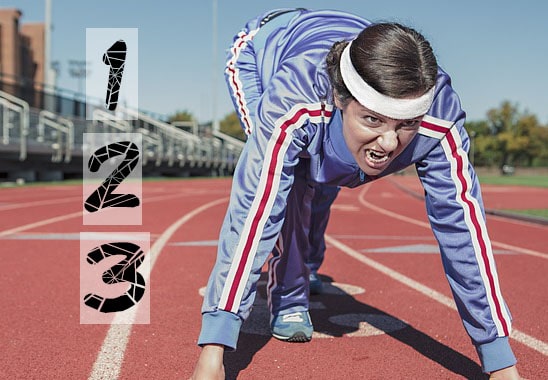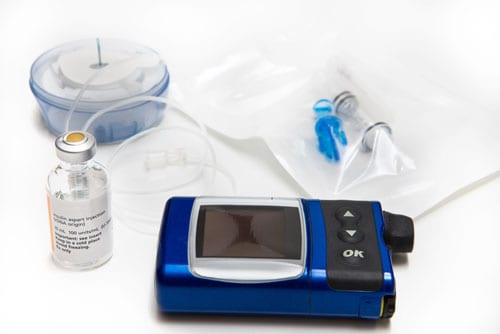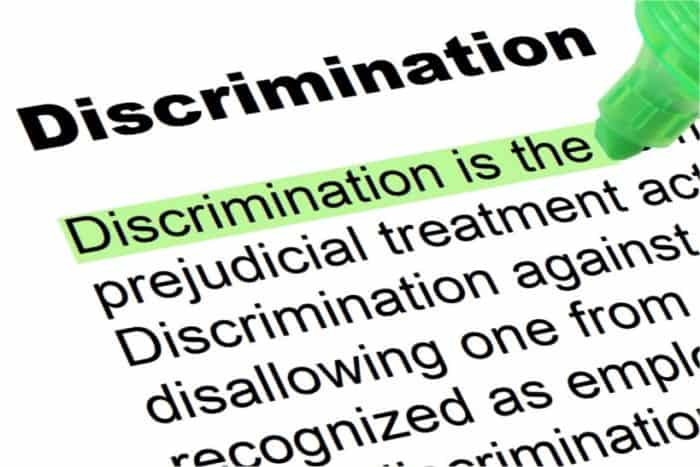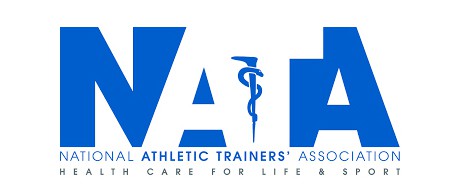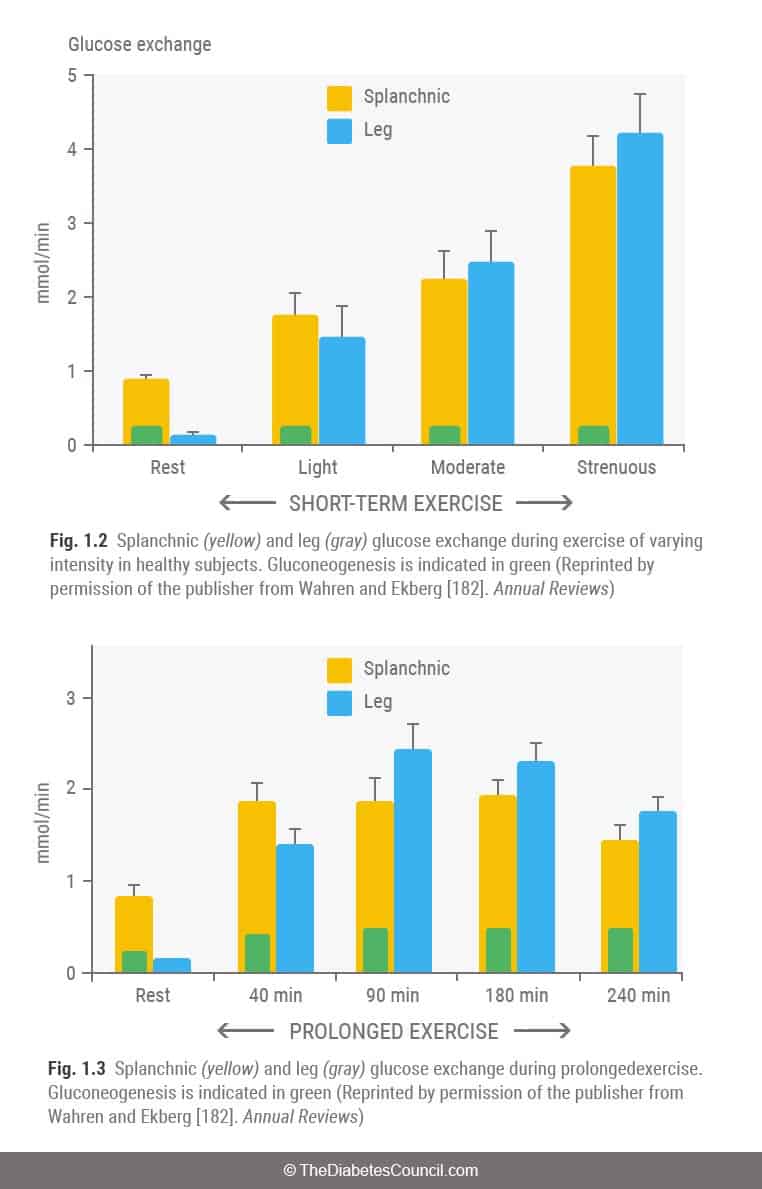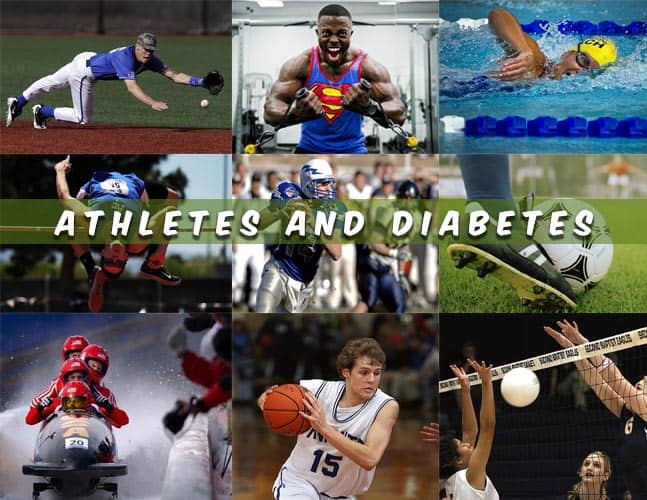
What do Scott Verplank (5 time PGA tour winner), Jay Cutler (Quarterback for the Denver Broncos and the Chicago Bears), and Jackie Robinson (Brooklyn Dodgers) all have in common?
Besides having achieved immense success in their sports career, they have also achieved a measure of success when managing their diabetes.
Had they not managed their diabetes very well, it is safe to say that they would have not been at the top of their careers. Their performance would have been impeded by signs and symptoms of low or high blood sugar.
When not performing at their best on a professional team, sportsmen can be fired for poor performance. So if an athlete is managing their diabetes, they should not be kept from playing professional or any kind of sports when they have the ability to do so.
With all of their team mates counting on them, athletes with diabetes have a lot to think about, prepare for, and do, because of the added complexity that their diabetes brings to the playing field.
There is a list of people in sports with diabetes on Wikipedia. Looking at the length of the list, it is clear that it is possible to succeed in just about any sport with diabetes. There are literally people with diabetes in every sport imaginable. There are people in football, baseball, basketball, canoe slalom, cricket, cycling, soccer, golf, ice hockey, and more.
Contents
What does it take to be an athlete with diabetes?
To be a successful athlete with diabetes, it is going to take some stellar self-management skills. The most important thing that an athlete with diabetes has to worry about is low blood sugars. With proper nutrition and strict control, you too can hit the ball out of the park, or reach the finish line, (all without episodes of hypoglycemia or hyperglycemia).
Hard work or low blood sugar?
Signs and symptoms of low blood sugar include sweating more than usual and feeling fatigued. Since these things can also be signs that you are having a good workout, an athlete with diabetes must be on keen alert, and pay close attention to their body signals.
If you are an athlete with diabetes, you have to stay on top of your blood sugars, lest they get the best of you. There are some things that you will need to do to make sure you stay within an appropriate range for your blood sugars during exercise.
First things first – monitor your blood sugar prior to exercise
If you are getting ready for some intense training as an athlete with diabetes, you will need to check your blood sugars before you set out on your training excursion. You will not want to start exercising until your blood sugar is greater than 70 mg/dl. If it is not at least 70 mg/dl, you will then need to eat an extra snack prior to your exercise routine.
Preparing for the big event
The adrenaline rush that occurs when a person is excited before a sporting event actually does make blood sugars rise. It is okay for your blood sugar to be a little high, as we will discuss in a minute. If your blood sugars respond to extremes of hot or cold temperatures, you will want to account for that, and adjust your plan accordingly.
Check out all of the details of the sporting event. If it is a race or triathlon, talk to the person in charge. Learn about the course, and plan your route. Find out if there are check points. If so, where would it be ok for you to leave an extra meter and glucose gel, or supplies? Can you leave a kit at each station?
Always consult with your primary care provider when planning sporting events, and before making any changes in your diabetes plan. You may need adjustments to your medications, diet, or other treatments.
Do not forget to snack before the sports event, and carry extra carbohydrates
In general, 15 grams of carbohydrates is enough to snack on if you are exercising for 30-45 minutes. However, you should always carry extra snacks with quick-acting carbohydrates in case you need it for a low blood sugar.
Eating a high carbohydrate meal the night before a race is recommended for athletes to increase their supply of glucose prior to an event. You should cover the carbohydrates with the right amount of insulin. Your body will store some for the event.
If you plan to exercise for an hour or longer, you then need to eat 30 grams of carbohydrates prior to exercising. For intense training, such as triathlons or marathons, you may need to eat an extra carbohydrate-containing snack during your activity. A 15-20 gram carbohydrate snack may be needed every 30 minutes during long, intense sporting activities.
What about pumpers?
A basal rate adjustment on your insulin pump will be needed during the athletic event. Do not disconnect your pump for more than an hour of exercising without administering an insulin injection. This is especially true for people with Type 1 diabetes, as they always need to have some insulin on board during any activity. If it is a swimming event, you may have to disconnect your insulin pump if it will not hold up in the water.
Injection and insulin pump site care for sporting events
All the sweating that is going on during sporting activities revs up your muscles and makes you sweat. Exercised muscles do not absorb insulin so well. Do not inject the muscles most used in exercise. If you are a runner, avoid injecting insulin into your thigh.
The sweating makes pump sites come off, so an athlete with diabetes can try a stronger adhesive or sealant, and make sure to change sites as directed every three days.
Nutrition is important
Eating 6 small, frequent meals throughout the day that contain carbohydrates, protein, and good fats, is important. This will help to keep your blood sugars steady during events that last the whole day. However, it may be best to avoid high sugar foods and foods with high fat content just before exercise. The amount of carbohydrates that makes one person feel okay during a race may make another athlete feel sick.
It is best to learn what kinds of food that you can tolerate prior to a sporting event ahead of time. High fiber foods work well for some athletes and not for others. Small, frequent meals and snacks will be better for performance than heavy meals during events.
After exercising, you need to refuel. Eat a good meal containing all food groups closely following completion of the sporting event.
For more diabetes lifestyles information read the following:
What about high blood sugars during exercise, do they not count?
Yes, high blood sugars during exercise is not good. You will want to postpone your exercise plans if your blood sugar is over 300 mg/dl. If your blood sugar is 240 mg/dl or above, you will want to check for ketones with a urine ketone strip before you exercise. These can be purchased at any pharmacy. (Check our list of diabetes supply)
If ketones are present, then do not exercise until blood sugars are down below 240 mg/dl, and ketones are absent.1
Do not forget to drink plenty of water to avoid dehydration when your blood sugars are high and during your exercise routine in general. Also, dose insulin as it is prescribed to you by your doctor. Do not exercise until you are ketone negative.
Following the sporting event
In addition to eating a nutritious meal to avoid post-exercise low blood sugar, you will want to continue to check your blood sugars often. Plenty of water is needed before, during, and after a sporting event. Getting dehydrated can make your blood sugars rise.
Make sure your coach and teammates know you have diabetes
You will want to make sure to let your coach, teammates, and other people who may be present during sports events know about your diabetes. You will want them to know the signs and symptoms of low blood sugar, and how to help you treat it, or administer a glucagon injection if needed.
Special precautions for insulin requiring diabetes
If you take insulin or other blood sugar lowering agents, you will want to have your doctor or sports medicine team evaluate you for decreased insulin or medication needs during exercise, and adjust your dosage accordingly.
Hypoglycemia can happen long after exercise
During exercise, your stores of glycogen get depleted. Don’t forget that a low blood sugar could happen anytime, even 4 to a whopping 48 hours after you exercise. You will want to check your blood sugars more often during this time, and make sure to eat regular meals and snacks without skipping any.2
In an article by Jimenez et al, they advise athletes, in order to have a successful attempt at managing diabetes, that “supplies to treat diabetes-related emergencies should be available at all practices and games”.
The athlete (or athlete’s parents/guardians, in the case of minors) provides the following items:
- copy of the diabetes care plan
- blood glucose monitoring equipment and supplies
- supplies to treat hypoglycemia
- supplies for urine or blood ketone testing
- a “sharps” container to ensure proper disposal of syringes and lancets
- spare batteries (for glucose meter and/or insulin pump3
If you are new to sports training
If you have just started to train for an endurance sport of any kind, you may not yet know how your body will respond to intense exercise. You should start on a treadmill, and check your blood sugars often to determine your patterns while exercising intensely.
It is also a good idea to write things down in a notebook by placing columns and rows across the page. You should begin keeping track of each time you exercise, including how many carbohydrates you consumed in order to make it through a workout without a low blood sugar, your medication dosages, and your blood sugars.
With the data in columns and rows, you can easily see your patterns in blood sugars, related to carbohydrates consumed and amount of time spent exercising. This will help you to make adjustments in your plan related to your increased sports training level.
What should your blood sugar be before you begin exercising?
Ideally, you should start exercising with your blood sugar a little bit higher than you might normally want it to be. Around 160-180 mg/dl is fine for starting a sporting event. Your blood sugar will go lower when you start to exercise as you expend energy.
Closer to 180 mg/dl may be more suitable for all day sporting events such as triathlon or Ironman events, because you know that you are going to have a drop during the event. Athletes who keep their blood sugars between 80 and 180 mg/dl tend to have less fatigue and sluggish feelings during a sporting event. Keeping their blood sugars within this range helps them perform better.
You will decrease your insulin resistance if you are Type 2 as you do endurance training. Type 1’s will have insulin uptake increased, as their body becomes more able to utilize the injected insulin with exercise.
How often should you test your blood sugars during sporting events?
During cycling races, triathlons, Ironman events, and marathons, an athlete should test their blood sugar ideally every 15 to 30 minutes. They have to work very hard to prevent a low blood sugar.
Should you be an athlete with diabetes?
Now that you see that you may have more to contend with than the average athlete without diabetes, should you be an athlete with diabetes?
We already know through research that exercising, good nutrition, and modest weight loss prevents Type 2 diabetes. Therefore, the researchers concluded that being an athlete gives you less risk of Type 2 diabetes.4
People with Type 1 diabetes will see their body absorb and take up their injected insulin at a more rapid pace. They may see a decrease in the amount of injected insulin that is needed. They should work with their doctor and health care team to adjust insulin doses accordingly. They may use as much as 20 percent less insulin during a sporting event such as a triathlon.
Those seem to be some pretty good reasons to be an athlete with diabetes. It stands to reason that if it can prevent diabetes in someone without diabetes; it can help to get a person with diabetes already in better control of their disease or utilize their medications better. This can help them to live healthy.
Athletes with diabetes may benefit from a sports medicine team
A team of sports medicine experts will likely be working with you if you are an athlete with diabetes playing with a major professional team. The team of sports medicine experts will come up with an individualized plan to look at prevention of complications during activity, and also plan for treatment of complications if they occur during the activity.5
The team can be made up of doctors, nurses, coaches and athletic trainers, sports nutritionists, and certified diabetes educators.
More discrimination
About three years ago, the New England Patriots fired Kyle Love due to his diagnosis of Type 1 diabetes. They did not call it that. They called it, “non-football illness designation.” You can call it what you will, but there is really only one word for it - discrimination.
The Jacksonville Jaguars decided to pick up Kyle Love when the Patriots ditched him. With his diabetes in control, he was able to start the next season.
Discrimination is not something that people with diabetes are unfamiliar with, and this is unfortunate. They get discrimination at school, they get it at work, and they get it when trying to enter certain professions. They get it when they try to be an athlete with diabetes, too.
Still, that doesn’t make discrimination right. Sometimes when you have diabetes, you have to stand up for yourself to prevent unfair treatment. This can pave the way for others with diabetes to experience less discrimination in the future. The American Diabetes Association has a wealth of resources related to discrimination. They can also recommend an anti-discrimination lawyer.
Peruse the American Diabetes Association’s anti-discrimination section here: http://www.sportsmed.theclinics.com/article/S0278-5919(09)00007-6/abstract?cc=y=
Another famous athlete with diabetes
Ironman athlete Cliff Scherb with Type 1 diabetes works with researchers to develop an algorithm for a closed-loop artificial pancreas that adjusts during exercise. He switched to an insulin pump and carries a supply bag with back up pre-filled insulin syringes, testing strips, a meter, and lancing device.
Further reading:
Scherb stops to test his blood sugar at every station during the intense Ironman event. He is in general taking in as much as 300 to 350 carbohydrate calories per hour while biking, and up to 200 to 280 calories per hour during the running phase of the event. Every 30 minutes, he drinks about 40 ounces of water.6
What does it take to be an athlete with diabetes?
An athlete with diabetes should have an advanced understanding of how nutrition, insulin levels, and exercise affects them. It is quite the balancing act that they must perform. They have to balance between getting the right amount of insulin and the right amount of carbohydrates in order not to bottom out during a sporting event. The timing of insulin dosing is key to a successful sporting event without incident related to diabetes.7
So if you have the stamina, endurance, and sheer drive, along with the ability to self-manage your diabetes, and want to become an athlete with diabetes, what are you waiting for?
Just do it!!! Do not let anyone stop you from reaching your goals in life.
National Athletic Trainers’ Association Position Statement on Management of the Athlete with Type 1 Diabetes
The National Athletic Trainers’ Association has a position statement on how athletes with Type 1 diabetes should be managed. According to the position statement, all athletes with diabetes should have:
- A diabetes care plan
- Needed supplies for athletic training kits
- A pre-participation physical examination
- A good understanding of the recognition of, treatment of, and prevention of low blood sugar
- A good understanding of the recognition of, treatment of, and prevention of high blood sugar
- Insulin administration via injection or insulin pump
- Travel recommendations by the diabetes care team
- An injury recovery program including frequent blood sugar checks
To read the details of the position statement, visit the website at: https://www.nata.org/sites/default/files/mgmtofathletewithtype1diabetesmellitus.pdf.
Glucose Exchange Data
Glucose exchange during exercise of varying intensity in healthy subjects.
Over to you
If you are an athlete with diabetes, and have some tips that you would like to share, The Diabetes Council would love to hear from you. Please share your experiences, difficulties, triumphs, and advice in the comments section below. As always, we, here at The Diabetes Council, strive to provide people with diabetes with information that they can use to help them in their daily lives. We hope this article will help you as you climb to the top of your sport as an athlete with diabetes. Let’s help others to break that finish line ribbon.
If you have any questions please post them down below.
TheDiabetesCouncil Article | Reviewed by Dr. Sergii Vasyliuk MD on June 01, 2020
References
- http://my.clevelandclinic.org/health/diseases_conditions/hic_Diabetes_Basics/sh_nutrition
- http://www.joslin.org/info/why_cant_i_exercise_with_ketones.html
- https://www.nata.org/sites/default/files/mgmtofathletewithtype1diabetesmellitus.pdf
- http://diabetes.diabetesjournals.org/content/35/10/1101.short
- http://www.sportsmed.theclinics.com/article/S0278-5919(09)00007-6/abstract?cc=y=
- http://www.diabetesforecast.org/2012/jul/cliff-scherb-ironman-athlete-with-type-1.html
- http://www.diabetesincontrol.com/working-with-diabetic-athletes-part-1/


